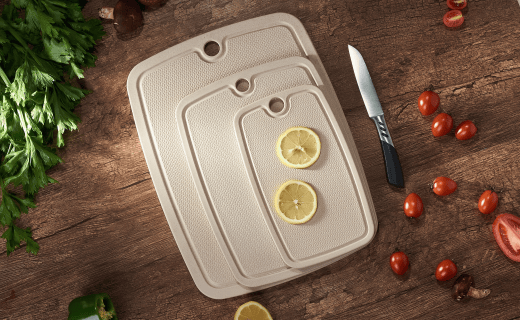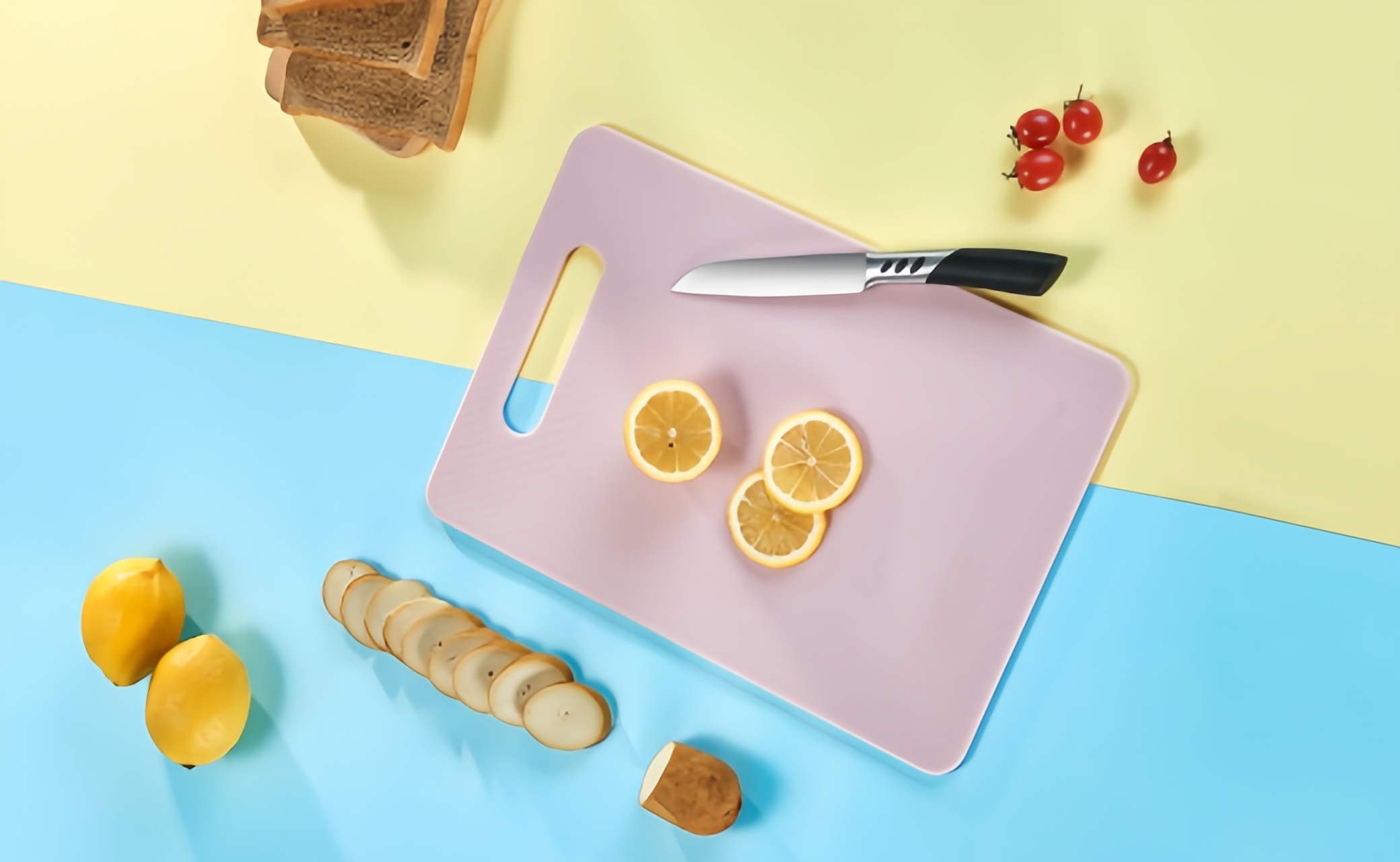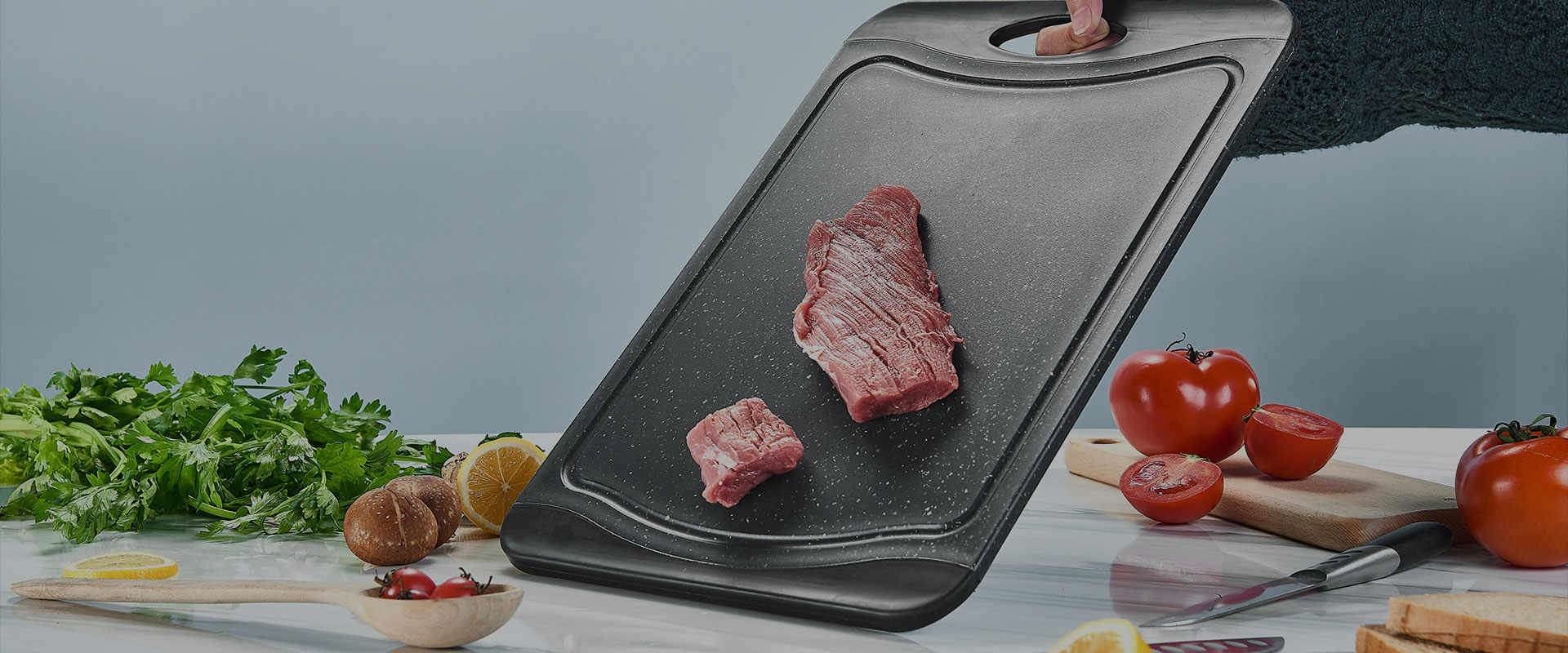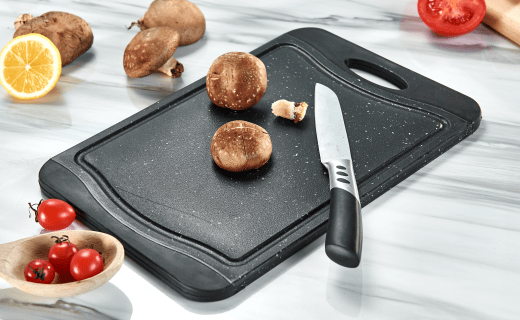safe for knives green manufacturing food prep surface
 An essential cutting surface functions as an essential implement in most home kitchens. It supplies a reliable and hygienic prep area, and the correct option enhances your culinary routine. Considering the many alternatives offered, you may feel unsure about how to begin. No problem — this Cutting Boards Manufacturers guide outlines the critical elements for selecting a suitable board.
An essential cutting surface functions as an essential implement in most home kitchens. It supplies a reliable and hygienic prep area, and the correct option enhances your culinary routine. Considering the many alternatives offered, you may feel unsure about how to begin. No problem — this Cutting Boards Manufacturers guide outlines the critical elements for selecting a suitable board. First step, weigh the material choices. Frequent options are wooden boards, bamboo slabs, plastic sheets, and glass panels. Each substance presents specific pros and cons. Wood cutting surfaces are durable and naturally hygienic but must be oiled regularly. Bamboo is a sustainable option that is both lightweight and strong. Plastic surfaces are inexpensive and low-maintenance but tend to wear knife edges sooner. Glass boards remain scratch-proof and cleanable in dishwashers but may be heavy and brittle.
Next, think about the size you need. A little board is handy for quick herb and garlic cutting; a large board offers sufficient room for slicing vegetables and prepping meals. Also take your counter area into account.

Finally, remember to think about aesthetics. A chic chopping board infuses personality into your culinary area. Select a surface that harmonizes with your kitchen style and preference.
Plastic, Wood, or Silicone: Choosing the Best Board
Picking a cutting surface leads to a continuing dispute about plastic, wood, and bamboo materials. Every material provides specific advantages, posing a tough choice for home culinary enthusiasts. Plastic cutting boards are known for their durability and ease of cleaning, while wood boards offer a more natural feel and can be sanded and refinished over time. Finally, the suitable choice ties to how often and what you cook.
Take into account usage frequency, cutting task types, and personal style when deciding.
- Plastic chopping slabs are typically more lightweight and budget-friendly than wooden boards
- Wood boards can be more visually appealing and have a longer lifespan with proper care
- Silicone cutting pads provide pliability and stain defense but typically aren’t as durable as plastic or wood
Ultimate Five Boards for Kitchen Pros
For culinary professionals, a reliable board is indispensable. It's the workhorse of your culinary empire, taking on everything from chopping vegetables to slicing meats. Even so, many options make selecting the right one a dilemma. Take heart, cooking aficionados — we researched and selected five boards to elevate your craft.
- Primary pick on our list is...
- The next selection is...
- Also featured is...
- Lastly, we have...
- Rounding out is...
Keeping Your Cutting Board Clean: A Guide
A cutting board is fundamental and needs correct maintenance to ensure safety and lifespan. Routine cleaning minimizes the chance of bacterial contamination.
Follow these helpful tips to maintain optimal board condition:
- Scrub the board with hot, soapy water after each use.
- Disinfect with a light bleach solution or a food-grade sanitizer.
- Dry your board thoroughly before storing it.
- Place the cutting board in an airy storage spot to stave off dampness.

Sharpening Techniques for Knives on Cutting Boards
On a cutting board, achieving a razor-sharp edge involves more than just random swipes. It involves controlling force and maintaining a precise angle. Begin by locating the right placement for the sharpener—maintaining a consistent angle against the blade. Continue by running the sharpener along the knife while keeping the angle steady. Remember that consistent, controlled strokes trump heavy-handed force. As you work the edge, you’ll notice the blade’s surface smooth out and catch less often. Experiment with techniques until you identify the method that suits your blade and tool. When perfected, the keen edge will slice smoothly and improve your food prep enjoyment.
Designing Boards for Kitchen Craftsmanship
This issue highlights Timbertop Designs, a notable producer committed to crafting high-quality cutting boards. With significant expertise, they craft timber into practical and aesthetic kitchen accessories. Their emphasis on quality is obvious in selecting sustainable wood and precise construction methods.
Each cutting slab is an individual work highlighting distinctive grain patterns. They supply a broad selection of styles and dimensions to accommodate everyone, from compact daily boards to large chef-grade butcher blocks.
- Further, Artisan Block Co. markets accessories such as designer knife blocks and board oils to maintain the board’s long life.
- If your goal is a durable, high-quality board to cherish, Artisan Block Co. offers excellent options.
Robust & Stylish: Today's Cutting Board Innovations
Enhance kitchen style and utility through modern cutting board design. Plain heavy boards are out—current designs feature inventive materials and silhouettes that integrate into cooking spaces. Built with durable hardwoods such as walnut and maple, these boards tolerate everyday use and enhance countertop aesthetics. From traditional rectangular designs to imaginative geometric forms, you’ll find boards for any style.
- Pick finishes that align with your kitchen decor.
- Consider boards with built-in juice grooves for easy cleanup.
- Invest in a durable cutting board built to last over time.
Eco-Friendly Board Choices for Conscious Kitchens
When opting for a new cutting surface, consider environmental consequences. Eco-conscious boards come from bamboo, responsible forest wood, or recycled plastic materials. These options shrink your ecological footprint and back the earth’s longevity.
- Choose bamboo, a quick-regenerating and sturdy resource.
- Choose wood from eco-certified managed forests.
- Consider boards built using recycled polymers to upcycle discarded materials.

Say Goodbye to Stains: Choosing the Right Cutting Board Material
Choosing the right material is essential for a cutting surface. A sturdy, easy-to-clean surface makes kitchen life simpler. Wood surfaces feel traditional but may soak up odors and stains. Bamboo balances durability with natural antimicrobial properties. Plastic is affordable, but it can scratch easily. Glass cutting boards offer a polished look but can chip or crack. Choose a board according to your prep tasks and style inclinations.
Reducing Board Accidents: Safety Measures
Keeping your board in good repair is vital for safe food handling. Always disinfect your boards before and after using them. Use separate boards for raw meat, poultry, and seafood to prevent cross-contamination. Avoid cutting on the board’s edge to stop damage that could harbor microbes. If deep cuts or splits appear, it’s time to discard and replace the board.
- Always slice on a secure surface.
- Maintain sharp knives to lower slipping hazards.
- Wash hands completely with soap and water following raw food handling.
Step Up Kitchen Skills with a Premium Cutting Board
A high-end board is more than a mere vegetable chopping surface. It stands as an investment that improves culinary experiences. Built with long-lasting and attractive materials like hardwood or bamboo, premium boards persist. Smooth boards give a stable base for accurate cuts and add visual appeal to your kitchen.
- A quality board can elevate the precision of slicing and dicing.
- Protect your countertops from scratches and damage.
- Display your cooking talents with a stylish and practical board.
